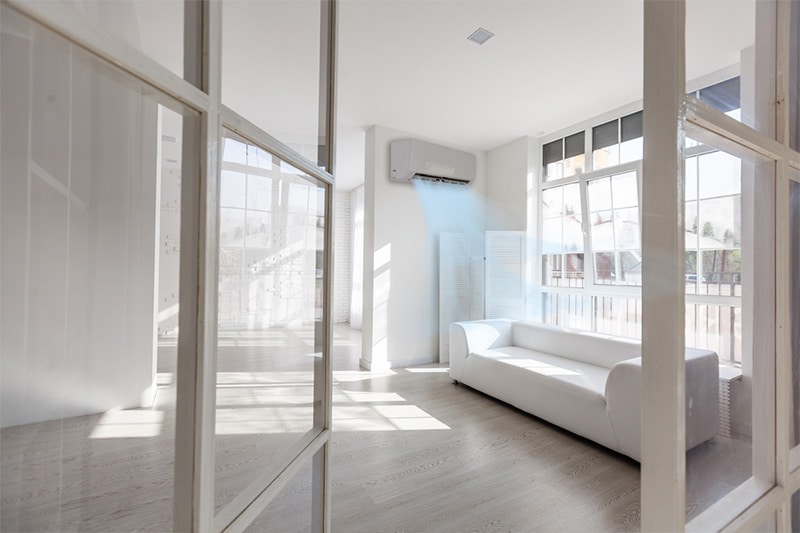What size air conditioner do I need for my home?
20.11.2020

Choosing the right size air conditioner is just as important as choosing a quality brand. In fact, if your air conditioner is too big or too small, it could increase the size of your power bill and fail to cool or heat your space room properly.
Make an informed choice with our comprehensive guide to choosing the right sized air conditioner for your home.
What you need to know about air conditioner size
When buying an air conditioner, it’s essential that you know and understand the unit’s kilowatt (kW) output. kWs are a measure of the output power of electrical appliances, with one kW being equal to 1,000 electrical watts.
Most users will need an air conditioner between 2 and 6 kW, but for large rooms and cold climates, there are units available from 6 to 10+ kW.
If you buy a unit with a kW output that’s too small for your room and conditions, the unit may run at full power constantly, increasing wear and tear and decreasing efficiency. On the other hand, if you buy a unit that’s too large, you may spend more than you need to and use more electricity.
Calculating what size air conditioner you need
The right size air conditioner for your space will depend on a number of factors including:
Room size
The bigger the room, the more power you’ll need to heat and cool it. Here’s a rough guide based on Carrier Air’s Aura Ultimate line of reverse cycle, split system units:
| Room size | Room example | kW output |
| 9-12 m2 | Home office or study | 2.10 |
| 9-17 m2 | Guest room or kid’s room | 2.36 |
| 15-25 m2 | Master suite | 3.55 |
| 25-35 m2 | Sitting room or home theatre | 5.05 |
| 35-48 m2 | Large dining rooms | 7.00 |
| 48-60 m2 | Large living rooms | 8.00 |
| 50-72 m2 | Open plan living spaces | 9.10 |
Note: the table above is only to be used as a rough guide. Your space may need a larger or smaller air conditioning unit depending on the factors listed below.
Location
If you live in a temperate climate, you may need a less powerful air conditioning unit. Temperate climates around Australia include:
- Sydney
- Perth
- Brisbane and South East Queensland
If you live in an area where the weather gets very hot or cold, you may need a more powerful unit. That includes:
- Melbourne
- Hobart
- Darwin
- Adelaide
- Northern Queensland
Insulation
If your home is poorly insulated (as many older homes are), hot and cold air will pour out through the walls, floor and roof. Because of that, you’ll need a more powerful unit to maintain a consistent temperature.
Roof insulation has the most impact so it’s worth looking at installing it if you don’t have it. In fact, a 30 m2 room with no roof insulation would require a 3.4 kW system to heat. That same room with roof insulation would only require a 2.2 kW system, according to Choice.
Gaps in walls, ceilings and windows may also affect the efficiency of your system. Seal them with insulation tape or filler and cover windows with curtains and/or blinds to stop conditioned air escaping.
Orientation
The orientation of a space can greatly affect its temperature and the power required to heat or cool it.
Rooms that have north facing windows that get plenty of sun may retain their warmth in winter and require less power to heat. In contrast, spaces with south or west facing windows may lose heat during the day and require more power to heat.
Home age
Most older homes and buildings are less weather tight and insulated. They may also use materials with a lower thermal performance, allowing hot or cold air to escape much more easily. For that reason, spaces in older buildings generally require higher powered systems, whereas spaces in newer builds may require a lower powered system.
To make it easier for you to pick the right reverse cycle split system air conditioner, Carrier Air’s product brochures include more detailed guides to how temperature and room size affect the size of air conditioner required. Check out our full range and download our brochures for more information.
